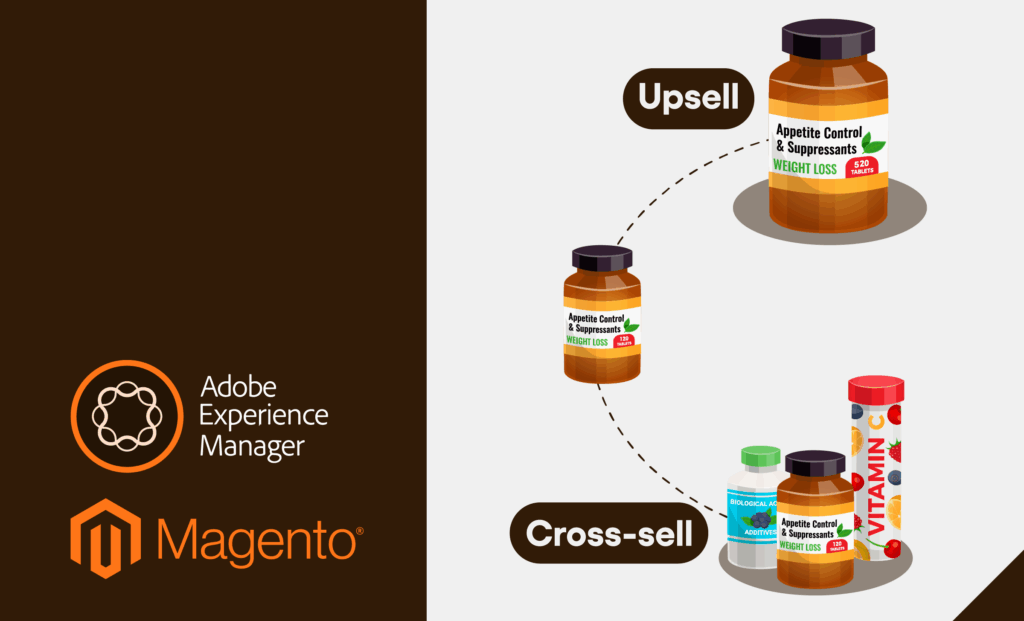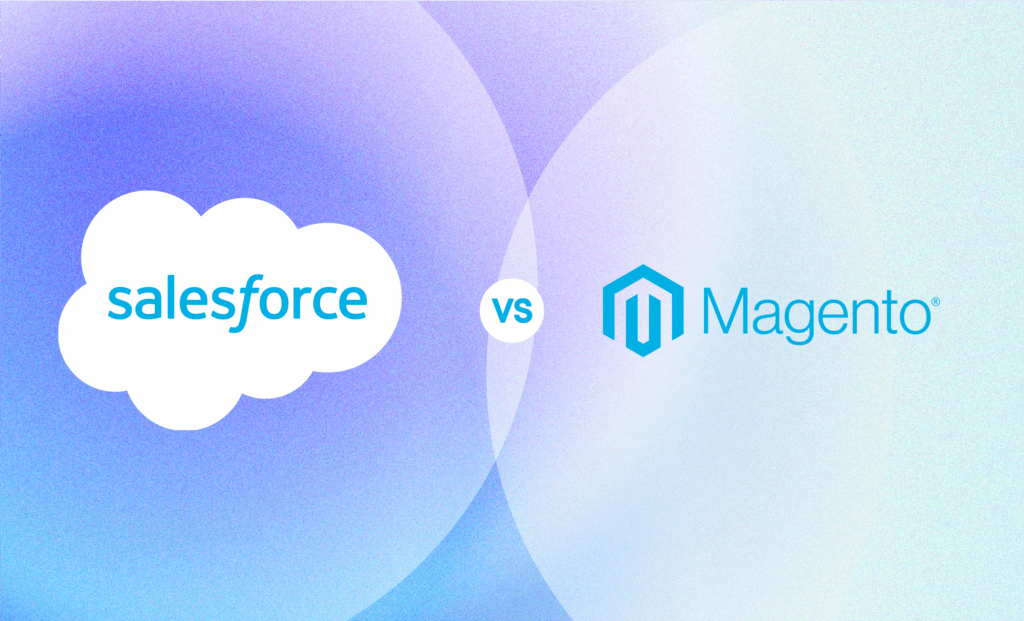Business logic defines the rules that govern how a commerce system operates: how prices are calculated, how orders are approved, how inventory is allocated, and how data flows through fulfillment and reporting. These rules are what turn a storefront into a functioning business system.
Some industries and business models apply these rules in more complex ways than others, requiring the platform to adapt to very specific operational realities:
- B2B commerce: Account hierarchies, negotiated pricing, and quote-based approvals.
- Cross-border and multi-market operations: Regional pricing, taxation, and localization requirements.
- Bulky goods and logistics-heavy sectors: Weight- and dimension-based shipping, warehouse routing, and delivery logic.
- Biomedical and regulated industries: Validation, traceability, and multi-step compliance workflows.
In these contexts, standard eCommerce implementations rarely cover all operational needs out of the box. Customization becomes essential not for aesthetics, but to ensure the platform mirrors how the business actually works.
In this article, we'll look at what makes Magento an extensible commerce solution and how its architecture allows organizations to implement their own rules in a structured, maintainable way.
TMO Group has over 10 years of experience helping global brands translate complex operations into maintainable, scalable systems using Magento (Adobe Commerce).
Magento's Layered Architecture Explained
Designing a commerce platform that can natively accommodate every business model and workflow is unrealistic. The range of pricing rules, approval paths, and fulfillment conditions across industries is simply too broad to anticipate in one system. Even the most configurable solutions eventually meet their limits when a business requires logic specific to its operations whether that's regional tax handling, multi-step approvals, or integration with regulated systems.
As a result, customization is inevitable. The question is not whether a platform can be customized, but how safely those customizations can be implemented. In traditional, tightly coupled systems, the different parts of the application (interface, logic, and data storage) are interdependent, thus a small change to one component can affect several others, making upgrades fragile and new features expensive to maintain.
Magento addresses this through a layered architecture, where each function of the system is clearly defined and separated:
| Layer | Purpose | Dependencies |
|---|---|---|
| Presentation | Controls how the store looks and interacts with users | Templates, storefront, and admin interface |
| Service | Defines how components and external systems communicate | APIs, service contracts, and data exchange |
| Domain | Contains the business rules that determine system behavior | Pricing, validation, and workflow logic |
| Persistence | Manages how data is stored, retrieved, and indexed | Product, order, and customer data management |
Each layer can evolve independently, allowing developers to introduce new rules or integrations without rewriting unrelated parts of the system, and enables businesses to adjust workflows or pricing logic without redesigning the platform.
In simple terms, Magento separates how things look, how they communicate, how they decide, and how they store. That is what allows complex business logic to remain manageable over time.
Learn how headless architecture and PWA front-ends extend this same modular approach in our article on Why Headless + PWA is the Future of Scalable eCommerceLearn how headless commerce and PWA empower faster launches, superior mobile UX, and future-proof your enterprise operations and global expansion.the future of Headless & PWA Commerce.
How This Design Keeps Commerce Extensible
Magento's architecture translates its layered design into a modular structure, where each major capability of the platform (for example, catalog management, checkout, customer data, or promotions) is built as an independent module.
A module bundles together the logic, presentation, and data components required for one business function. These modules communicate through defined interfaces, which means one can evolve without disrupting the others. For example, a change to how pricing is calculated can occur within the pricing module without affecting catalog display or checkout behavior.
Example
Imagine your business wants to introduce a custom rule for how shipping costs are calculated:
- The presentation layer (checkout UI) displays the available shipping options.
- The service layer manages communication between the checkout and backend.
- The domain layer runs the shipping-rate calculation logic.
- The persistence layer stores order and shipping data.
To implement this rule, developers might use a plugin to adjust the shipping-rate method in the domain layer, add an observer to trigger an ERP update once the order is stored, and group both changes into a custom module so the feature remains portable and easy to maintain. The important point isn't the mechanics, rather how the system's structure allows each of these changes to remain contained within its scope.
This extensibility is what makes Magento sustainable for long-term, complex projects. Because the system is built around clear boundaries, it promotes knowledge transfer and maintainability over time. In practical terms, the architecture offers three enduring benefits:
- Separation of business logic from presentation: design changes don't interfere with operational rules.
- Organized and predictable code structure: developers can locate and modify specific behavior reliably.
- Safer, more isolated customization: new logic or integrations can be added without destabilizing the system.
Now imagine that next year your shipping policy changes:
The update would happen within the shipping module's logic. No need to alter templates, databases, or connectors. Even if a new team took over, the structure would guide them directly to where that rule lives. That is the advantage of a well-layered architecture: change is not only possible but predictable.
Technical Debt in eCommerce: Causes, Costs, & How to Manage ItFrom conversion loss to rising costs, learn how tech debt builds up, how to identify it, & how to tackle it without starting from scratch.
5 Scenarios Where Magento's Modularity Excels
Because the platform's architecture separates presentation, logic, and data, companies can translate their operational rules directly into the system without bending processes to fit a template.
The following examples illustrate how this design supports different types of complexity common in enterprise commerce:
a) B2B Workflows
B2B commerce introduces multi-step decision processes: account hierarchies, quote approvals, and company-specific pricing. These rules are often too intricate to be represented in a simple checkout flow.
Magento's architecture allows each step of the procurement process to operate independently:
- The domain layer holds the business rules that define quotes, approvals, and order logic.
- The service layer coordinates data between users, accounts, and orders.
- Each workflow component can evolve without affecting catalog, pricing, or checkout functions.

b) Pricing Models
Pricing logic is rarely static. Many businesses apply different rules based on customer type, region, season, or purchase volume. In rigid systems, these conditions quickly multiply into conflicts that slow performance or require manual workarounds.
Magento's structure keeps pricing logic adaptable and isolated:
- Pricing rules exist in the domain layer, separate from product presentation or checkout.
- New conditions, such as regional taxes or tiered discounts, can be introduced as discrete modules.
- Developers can extend or replace logic without rewriting how prices are displayed or processed.

c) Logistics and Fulfillment
Fulfillment logic often depends on complex combinations of warehouse locations, carrier rules, and delivery priorities. When this logic is hard-coded or entangled with checkout, even small changes can disrupt operations.
Magento's architecture separates fulfillment intelligence from the transactional flow, keeping integrations stable as logistics evolve:
- The service layer facilitates clean communication with ERP, WMS, or carrier systems.
- Fulfillment rules such as warehouse selection or carrier ranking, can exist in dedicated modules.
- These modules evolve independently, without requiring changes to checkout or order workflows.

d) Multi-Market and Multi-Brand Operations
Enterprises operating across multiple regions or brands face another layer of complexity: managing variations in catalog, currency, tax, and content without fragmenting systems. Many platforms require separate instances or duplicated configurations for each storefront.
Magento's layered structure enables unified yet flexible governance:
- Multiple storefronts share core data and logic while applying localized rules for currency, tax, or language.
- The presentation layer allows visual and content differentiation without duplicating backend logic.
- Centralized administration ensures consistency across brands while preserving local autonomy.
e) Regulated or Specialized Industries
In regulated industries such as biomedical, finance, or energy, compliance workflows and traceability requirements are non-negotiable. Platforms that lack architectural separation often handle these as external processes, creating risk and inefficiency.
Magento's architecture allows compliance to be built into operations:
- Validation and approval logic can live in the domain layer, isolated from the user interface.
- The service layer exposes this logic for reporting, audit, or oversight.
- Compliance features remain part of business logic, not external workarounds.

Can Magento Suit your Operational Needs?
Across all these cases, Magento's architecture provides a common advantage: the ability to adapt systems around how the business operates. Whether the challenge is organizational complexity, dynamic pricing, or regulatory control, its layered and modular design keeps the platform extensible and enabling long-term evolution without architectural fragility.
Magento vs. Salesforce: Cost, Features + How to ChooseWe compare Salesforce & Magento for enterprise eCommerce: costs, scalability, China context, and which solution best fits your business needs.
But this advantage only materializes when a business's operations actually demand that level of structure. The same features that make Magento powerful can become unnecessary overhead when flexibility is not essential to the business model.
In these scenarios, Magento's layered, modular design becomes a strategic asset: a system that can evolve alongside the organization, maintaining stability while accommodating change.
- Processes are non-standard. Workflows, approvals, or pricing rules reflect unique business operations rather than generic eCommerce models.
- The business spans multiple markets or brands. Regional or brand-level variations need to coexist under one governed system.
- Integrations drive daily operations. ERPs, OMSs, or CRMs exchange critical data with commerce functions in real time.
- Regulatory or compliance demands exist. Traceability, approval chains, and audit controls must be embedded into workflows.
- There is technical ownership. Internal teams or trusted partners can maintain and evolve the system responsibly.
For businesses with simpler catalogs or limited customization needs, however, it could be more architecture than necessary. SaaS platforms can provide faster deployment and lower operational overhead when processes align with standardized workflows. Magento's strength lies in its openness, but the openness of the architecture only delivers value when it's actively managed.
Designing Advanced Commerce Architectures with TMO
Choosing a commerce platform is not just a technical decision, it's an architectural one. The right foundation should reflect how your business operates, not force it to adapt. For companies that value control over logic, integration, and growth, Magento's design offers a framework that can evolve alongside their operations.
At TMO Group, we help organizations translate that potential into practical architecture. Our work spans from evaluating existing setups and defining extensibility strategies to designing frameworks for multi-market and B2B operations. We approach Magento not as software to install, but as a system to shape; one that aligns technology with how your business truly functions.
If your commerce platform needs to mirror your organization's structure and processes, get in touch with us to discuss if Magento's architecture is the right foundation.














